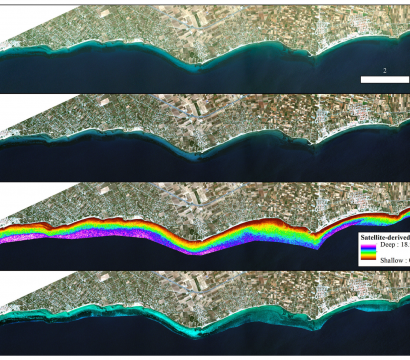RapidEye Imagery Used to Monitor Suspended Sediments in Tropical Rivers
The flow of suspended sediment—fine particles carried by the water column—varies widely in tropical rivers, and can influence water availability, silting of reservoirs and pollution. Monitoring sediment loads over large rivers can be difficult with ground stations, making remote sensing a preferred solution. However, high spatial and temporal resolution are required to […]











